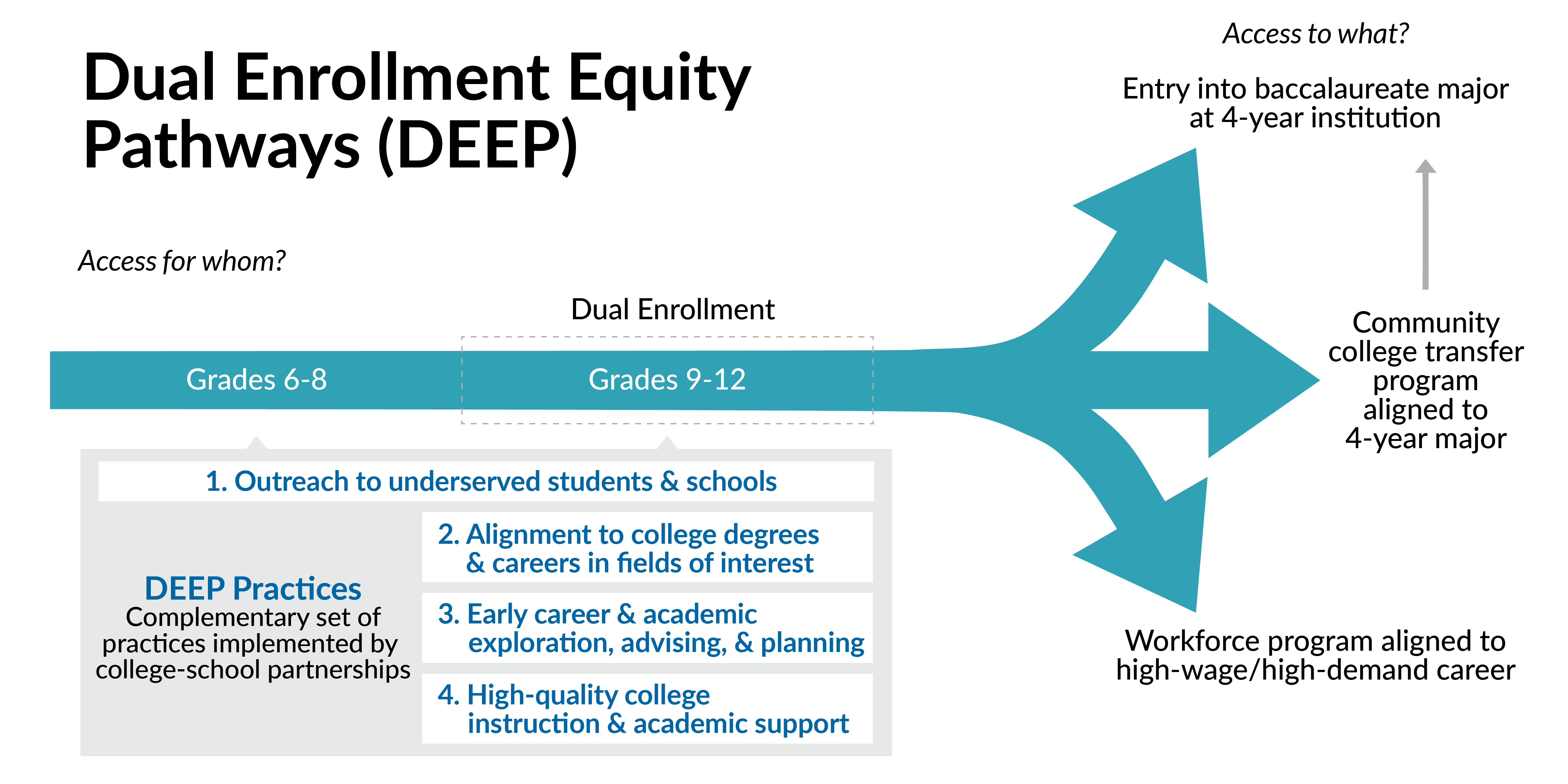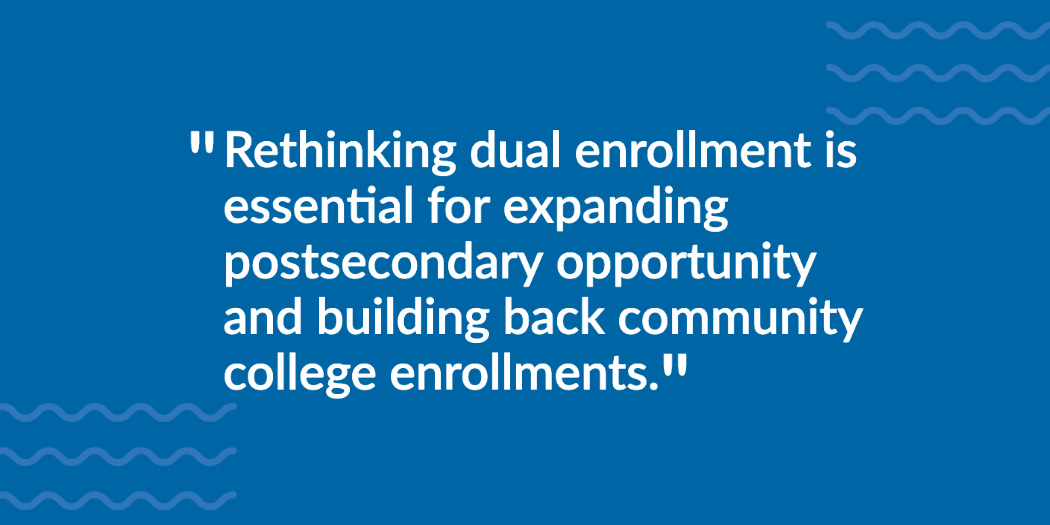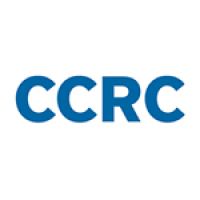By John Fink, Maggie Fay, Reggie Gilliard, Sarah Griffin, Davis Jenkins, and Lauren Schudde
High school students taking college courses through dual enrollment programs have made up an increasing share of community college enrollees in recent years, jumping from 7% nationally in fall 2007 to 16% (or more than 1,000,000 students) in fall 2019. A growing body of evidence connects dual enrollment coursetaking with increased likelihood of college-going and success. But as dual enrollment programs have grown, so too have concerns about which students have the opportunity to benefit, how well courses and programs align with students’ postsecondary plans, and what the growing share of high schoolers in their student bodies means for colleges.
Share of 2019 community college fall enrollment from high school dual enrollment
Community colleges have generally taken a laissez-faire approach to dual enrollment. Colleges often determine which dual enrollment courses to offer based on requests from partnering high schools or the availability of instructors rather than looking to increase high school students’ access to foundational coursework in a field of interest. Moreover, colleges and high schools often do little to increase access to dual enrollment for first-generation college students, students of color, English learners, students with disabilities, and other students who have not been well served in the high school-to-college transition. Exclusionary mindsets, policies, and practices—such as reliance on high-stakes placement tests for eligibility despite research questioning their validity as predictors of college readiness and raising concerns that they perpetuate inequities—too often close the door to students who could benefit from dual enrollment. Given the lack of intentionality in programming and access, it is not surprising that dual enrollment is sometimes referred to as a “program of privilege” and students’ participation in it framed as “random acts of dual enrollment.”
In CCRC’s research over the past several years on over 100 colleges nationally that are implementing whole-college guided pathways reforms, and in our recent dual enrollment research with the Aspen Institute’s College Excellence Program, we have observed that a growing number of colleges are extending guided pathways practices to dual enrollment offerings to help expand college access and opportunity for underserved students. In this emerging approach to dual enrollment, which we call dual enrollment equity pathways, or DEEP, community colleges partner with middle and high schools to motivate and prepare underserved students to pursue college pathways in fields of interest to them by:
- reaching out to underserved students and families to encourage and support them to participate in dual enrollment
- aligning dual enrollment course offerings to bachelor’s and career-technical college programs in high-opportunity fields
- supporting every student with career and academic exploration, advising, and planning
- delivering high-quality instruction that builds students’ confidence as college learners
Colleges and their K-12 partners are working to expand college and career opportunities by implementing a set of DEEP practices. As illustrated in the graphic below, they are combining equity-focused efforts to close gaps in dual enrollment access with guided pathways practices aimed at motivating and preparing students to pursue high-opportunity college programs. Given the disproportionate impact of the pandemic on community colleges and their students, rethinking dual enrollment is essential for expanding postsecondary opportunities and building back college enrollments.

The DEEP framework is an early attempt to capture what we are learning from community colleges that are connecting guided pathways reforms with efforts to advance equity through dual enrollment. In a new project funded by the Bill & Melinda Gates Foundation and the Joyce Foundation, CCRC is partnering with the Florida Student Success Center, the Texas Success Center, and the Ohio Department of Higher Education to conduct applied research to inform scaling of DEEP practices across community colleges and K-12 schools in these states. Over the next two years, we will conduct field research at community colleges and K-12 schools that are implementing DEEP practices and have increased college access and success for Black, Latinx, low-income, and other underserved students through dual enrollment. In this research, we will examine how colleges and their K-12 partners are implementing DEEP practices in different institutional contexts, what metrics educators can use to motivate and evaluate reforms, what the costs and incentives are for colleges and K-12 partners to implement DEEP practices, and how statewide policy can support K-12 and college leaders working to implement DEEP practices.
As the project unfolds, we will share what we are learning through blog posts and produce reports, guidance, and tools for college and K-12 leaders looking to leverage dual enrollment to create on-ramps to high-opportunity college and career pathways for underserved students.





